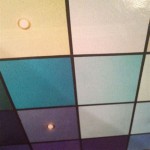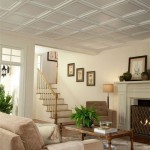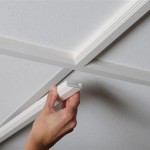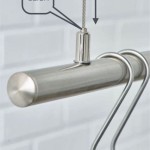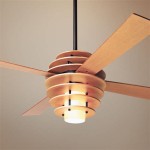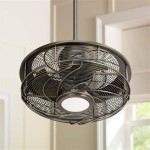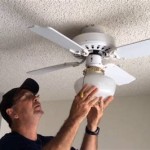The Quest for the Quietest Flush Mount Ceiling Fan
Flush mount ceiling fans, also known as hugger ceiling fans, are designed to be installed directly against the ceiling, making them ideal for rooms with low ceilings or limited vertical space. These fans offer a practical solution for air circulation and temperature regulation without sacrificing valuable headroom. However, one common concern among potential buyers is noise level. A noisy ceiling fan can be disruptive, particularly in bedrooms or living areas where tranquility is desired. Therefore, selecting the quietest flush mount ceiling fan becomes a priority for many.
The perceived noise from a ceiling fan originates from several sources, including the motor, blade rotation, and any inherent vibrations. Understanding these factors is crucial in identifying features and designs that contribute to quieter operation. Manufacturers constantly strive to minimize noise production through improved motor technology, balanced blade designs, and the use of noise-dampening materials.
This article delves into the various aspects that contribute to the quiet operation of flush mount ceiling fans, examining the design features, motor types, blade materials, and installation techniques that play a role in minimizing noise. The objective is to provide comprehensive information to assist consumers in making an informed decision when selecting a quiet flush mount ceiling fan for their specific needs.
Motor Technology and Its Impact on Noise Levels
The motor is arguably the most critical component determining the noise level of a ceiling fan. Traditionally, AC (Alternating Current) motors were the standard. While generally reliable, AC motors often produce a hum or a slight buzzing sound, especially at higher speeds. The older induction motor design is particularly prone to this. The type of bearing used in an AC motor also plays a role; less expensive ball bearings may contribute to more noise compared to higher-quality sealed bearings or even magnetic levitation bearings.
More recently, DC (Direct Current) motors have gained popularity in ceiling fans due to their energy efficiency and quieter operation. DC motors are inherently more efficient than AC motors because they use a magnetic field to rotate the motor, thus reducing drag and therefore needing less energy to spin. DC motors also offer a wider range of speed settings and smoother transitions between speeds, which further contributes to reduced noise. The use of advanced electronic circuitry allows for more precise control over the motor's operation, minimizing vibrations and unwanted sounds.
The quality of the motor’s internal components is also important. High-quality windings, precision bearings, and robust construction all contribute to a quieter and more durable motor. Look for motors that are specifically designed for quiet operation and are often marketed as such. Many manufacturers provide decibel (dB) ratings for their fans, which can be a useful indicator of noise level. A difference of just a few decibels can be noticeable, so comparing the dB ratings of different models is a worthwhile exercise.
Another factor to consider is the motor's isolation from the fan housing. Some manufacturers use rubber or other damping materials to isolate the motor from the rest of the fan, reducing the transmission of vibrations and noise to the surrounding environment. This isolation can significantly reduce the overall noise level of the fan, especially at higher speeds.
Blade Design and Material: Minimizing Air Turbulence and Noise
The design and material composition of the ceiling fan blades also have a significant impact on noise levels. Blades that are not properly balanced or are aerodynamically inefficient can create excessive air turbulence, leading to unwanted noise. The shape, pitch, and surface finish of the blades all contribute to the creation of airflow and the generation of noise.
Aerodynamic blade designs aim to minimize air resistance and turbulence. Blades with a smoother curvature and a carefully optimized pitch can move air more efficiently and quietly. Some blades feature specially designed edges or winglets that disrupt airflow in a way that reduces noise. The pitch of the blade, which is the angle at which it sits relative to the horizontal plane, is crucial. An excessively steep pitch can generate more noise, while a too-shallow pitch may not move enough air.
The material used for the blades also plays a role. Wood blades, particularly those made of lightweight materials like balsa wood, are often quieter than metal or plastic blades. Wood has inherent damping properties that help to absorb vibrations and reduce noise. However, solid wood blades can be heavier and more expensive. Engineered wood composites, such as plywood or MDF (Medium-Density Fiberboard), can offer a good balance of noise reduction, durability, and cost.
Plastic blades, while lightweight and durable, can sometimes be noisier due to their tendency to vibrate at certain frequencies. However, high-quality plastic blades made from dense polymers can be engineered to minimize noise. Metal blades, such as those made from aluminum or steel, are generally the loudest due to their rigidity and susceptibility to vibration. However, metal blades can be effective if they are properly balanced and designed with aerodynamic principles in mind.
The number of blades can also affect the noise level. Generally, fans with fewer blades tend to be quieter because they create less air turbulence. However, the design of the blades is more important than the number. A well-designed five-blade fan can be quieter than a poorly designed three-blade fan. Ultimately, the goal is to find blades that move air efficiently and quietly, regardless of the material or number of blades.
Installation Techniques for a Quieter Operation
Even the quietest flush mount ceiling fan can become noisy if it is not installed correctly. Proper installation is crucial for minimizing vibrations and ensuring smooth, silent operation. Several key factors contribute to a successful and quiet installation.
First and foremost, the mounting surface must be secure and stable. If the ceiling electrical box is loose or not properly attached to the joists, the fan will vibrate and create noise. Ensure that the electrical box is rated for ceiling fan use and is securely fastened to the ceiling structure. If necessary, reinforce the electrical box with additional bracing to prevent movement and vibration.
The fan's mounting bracket should be securely attached to the electrical box. Use the appropriate screws and hardware, and tighten them firmly but not excessively. Over-tightening can damage the mounting bracket or the electrical box, while under-tightening can allow the fan to vibrate. Some fans come with rubber washers or other damping materials that can be placed between the mounting bracket and the electrical box to reduce the transmission of vibrations.
Balancing the fan blades is another essential step in ensuring quiet operation. Even slightly unbalanced blades can cause the fan to wobble and vibrate, leading to noise. Most fans come with a balancing kit that includes small weights that can be attached to the blades to correct any imbalances. Follow the instructions provided with the balancing kit to determine the optimal placement of the weights. This may involve some trial and error, but it is well worth the effort to achieve smooth, quiet operation.
Ensure that all screws and fasteners are properly tightened. Loose screws can create rattles and vibrations that contribute to noise. Periodically check the screws and fasteners to ensure that they remain tight. A few drops of thread-locking compound can help to prevent screws from loosening over time.
Finally, consider the surrounding environment. Objects that are close to the fan, such as light fixtures or ceiling moldings, can sometimes vibrate in response to the fan's operation. Ensure that there is adequate clearance between the fan and any surrounding objects to prevent contact and vibration. If necessary, add damping materials, such as felt pads, to any surfaces that are prone to vibration.
By paying attention to these details during installation, it is possible to significantly reduce the noise level of a flush mount ceiling fan and enjoy quiet, comfortable air circulation.
In conclusion, achieving a quiet flush mount ceiling fan experience involves a multi-faceted approach, encompassing motor technology, blade design, material selection, and meticulous installation techniques. A careful consideration of these elements will help consumers make informed decisions and ultimately enjoy the benefits of a quiet and efficient ceiling fan.

Quiet Ceiling Fans Hunter Fan

Aoibox 46 White Ultra Quiet Ceiling Fan With Led Light And Remote Control 6 Sd Dc Motor Energy Efficient W 3 Color Snmx2840 The Home Depot

Top Quietest Ceiling Fans With Light For Bedroom In 40 Off

Top Quietest Ceiling Fans With Light For Bedroom In 40 Off

52 In 6 Sd Indoor Outdoor Walnut Flush Mount Ceiling Fan With Remote Control And Reversible Dc Motor Timer Zt W136755964 The Home Depot

The Best Ceiling Fans For Bedrooms By Size Fan Feature Delmarfans Com

Reviews For Kichler Volos 48 In Integrated Led Indoor Brushed Nickel Flush Mount Ceiling Fan With Light Kit And Wall Control Pg 1 The Home Depot

7 Best Ceiling Fans Of 2024 U S News

Quiet Ceiling Fans Hunter Fan

Top Quietest Ceiling Fans With Light For Bedroom In 40 Off
Related Posts

